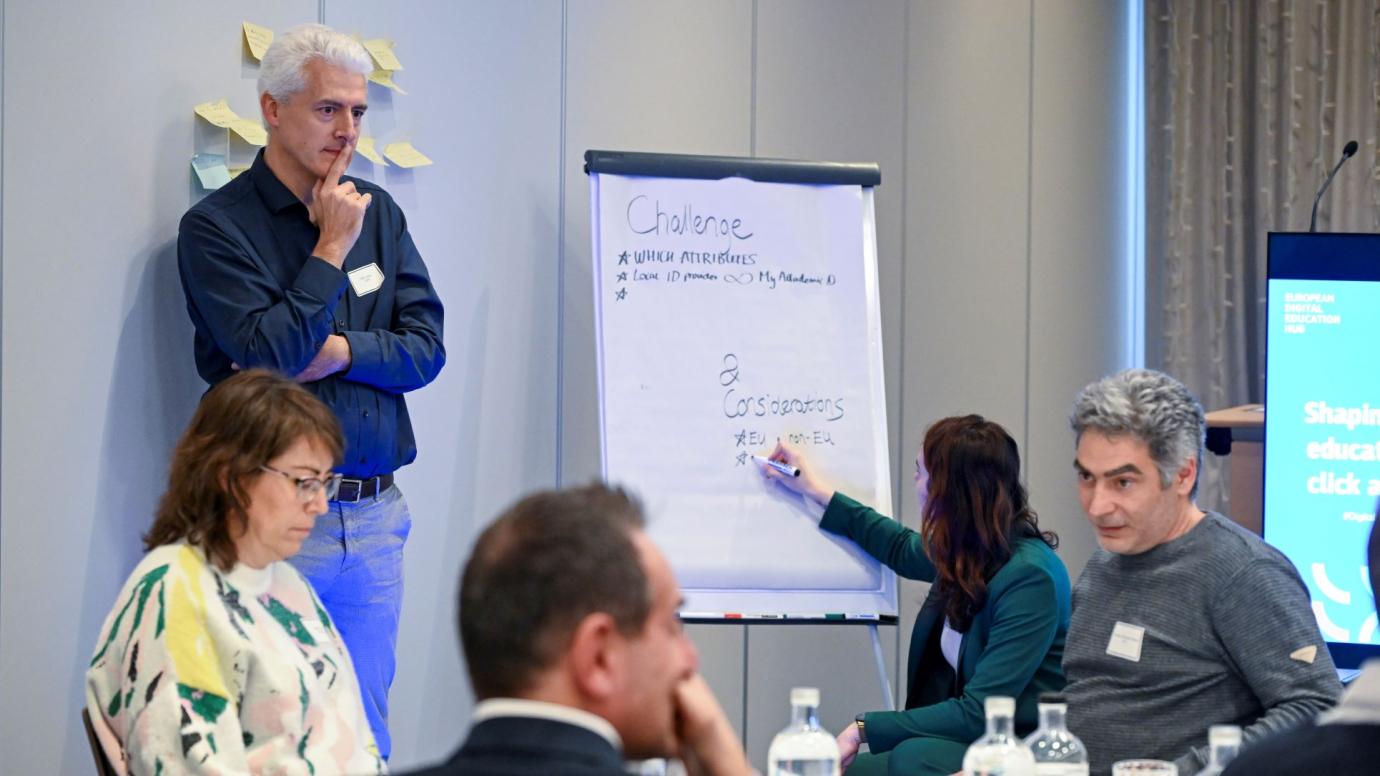The framework is developed to make it easier for students to learn across borders. It focuses on practical application and collaborative governance. It provides real-world solutions to connect European universities better.
The framework brings together:
- European Universities alliances
- higher education institutions
- interoperability task leaders
- tech and EdTech experts
- policymakers
- European Commission representatives
The framework was created by a dedicated expert group within the European Digital Education Hub.
Unlock the benefits
This framework supports Europe's broader goals for digital growth in education. It offers several key benefits:
- seamless learning paths for students - systems can more easily exchange records, qualifications and credentials across borders and institutions
- effective collaborations – institutions can better share resources, data, and expertise
- less red tape - efficient data sharing simplifies enrolment, qualification recognition, and student record management
What is inside the framework
The framework focuses on 8 specific use cases that show key processes in higher education. It offers a complete approach to achieving interoperability on the policy, organisational and technical levels.
Framework report and recommendations
The report provides a reference architecture, flow diagrams, and practical recommendations to bridge gaps in the systems.
Analysis of the state of play
The synthesis report examines data from more than 40 European University alliances. It shows the current state of interoperability. The report highlights common methods and experiences. It also suggests ways to tackle challenges, providing valuable insights for decision-makers.
Inventory of standards, processes and ICT systems
The mapping report explores the standards and solutions used by European Universities alliances. It analyses tools and standards by use case and outlines what each solution needs. It points out critical gaps and calls for action to improve the system compatibility.
Governance proposal
A multi-stakeholder coordination group forms the base for an open, inclusive, and lasting structure to support interoperability in European higher education. The group started its work in April 2025 within the Hub.
Implementation resources
The implementation resources provide a modular and flexible toolkit. The kit lets higher education institutions adapt and tailor elements of the framework to their specific contexts and needs.
Reference architecture
The blueprint reference architecture shows the technical setup using ArchiMate modelling language. It gives 3 perspectives for each of the priority use cases: organisational, semantic, and technical.
Join the working group
Do you have experience or interest in this topic? Get involved and help drive the adoption, scaling, and future development of the framework.
To join the working group, you'll need to first request Hub membership.



